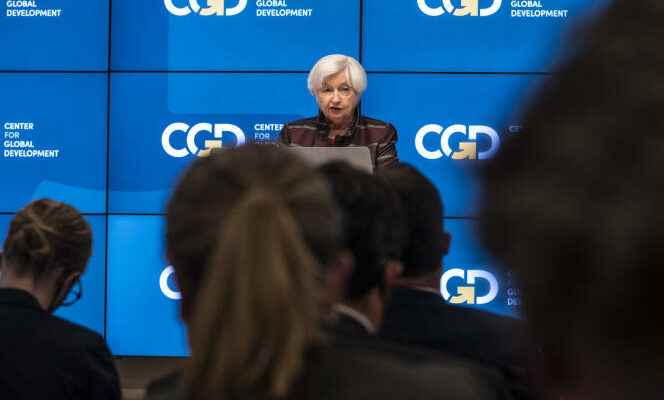There are central bank governors these days who are more concerned than others. “The global economy is in the eye of the storm”, declared, at the end of September, that of the Reserve Bank of India. Shaktikanta Das has reason to worry: the reserves of the institution based in Bombay have melted by 100 billion dollars (103 billion euros) since the beginning of the year, while it is buying up arm of rupees to stem its fall against the greenback.
Since the Federal Reserve of the United States (Fed) began raising its rates in the first half of the year to fight inflation, capital has been deserting emerging markets, weakening their currencies in the process. Thus, the Ghanaian currency, the cedi, has lost 41% against the dollar since the beginning of the year, while the Taiwanese dollar has depreciated by 13%. In Mongolia, the tugrik lost 16% of its value, while central bank reserves fell by 40% in one year. Khan Bank, the largest banking institution in the country, has just announced the capping of foreign currency conversions at 300 dollars per month.
“As the global economy heads into choppy waters, the time has come for leaders in emerging countries to batten down the hatches”, alerted the chief economist of the International Monetary Fund (IMF), Pierre-Olivier Gourinchas, in forecasts published on Tuesday, October 11. During the first three quarters of the year, foreign investors sold in Asia, excluding China, 69.7 billion dollars of assets, well beyond the 47.6 billion dollars that they had sold at the peak of the global financial crisis of 2008.
Fearful international institutions
The JP Morgan bank has revised upwards its forecast for capital outflow from intermediate economies in 2022 to 80 billion dollars, instead of 55 billion. “Eleven emerging countries risk a balance of payments crisis due to international monetary tightening”, warns the credit insurance company Allianz Trade, in a note published in early October. These countries include Chile, Pakistan, Hungary, Kenya and Tunisia.
These stalls raise the risk of a financial crisis similar to those that have already shaken the planet. With each tightening of US monetary policy, when the liquidity taps close, the financial storm rises in emerging countries, as was the case in the spring of 2013, or in 1994, in Mexico. This vulnerability is due both to their external financing needs and to the dominance of the dollar in international transactions and world trade.
You have 66.41% of this article left to read. The following is for subscribers only.
